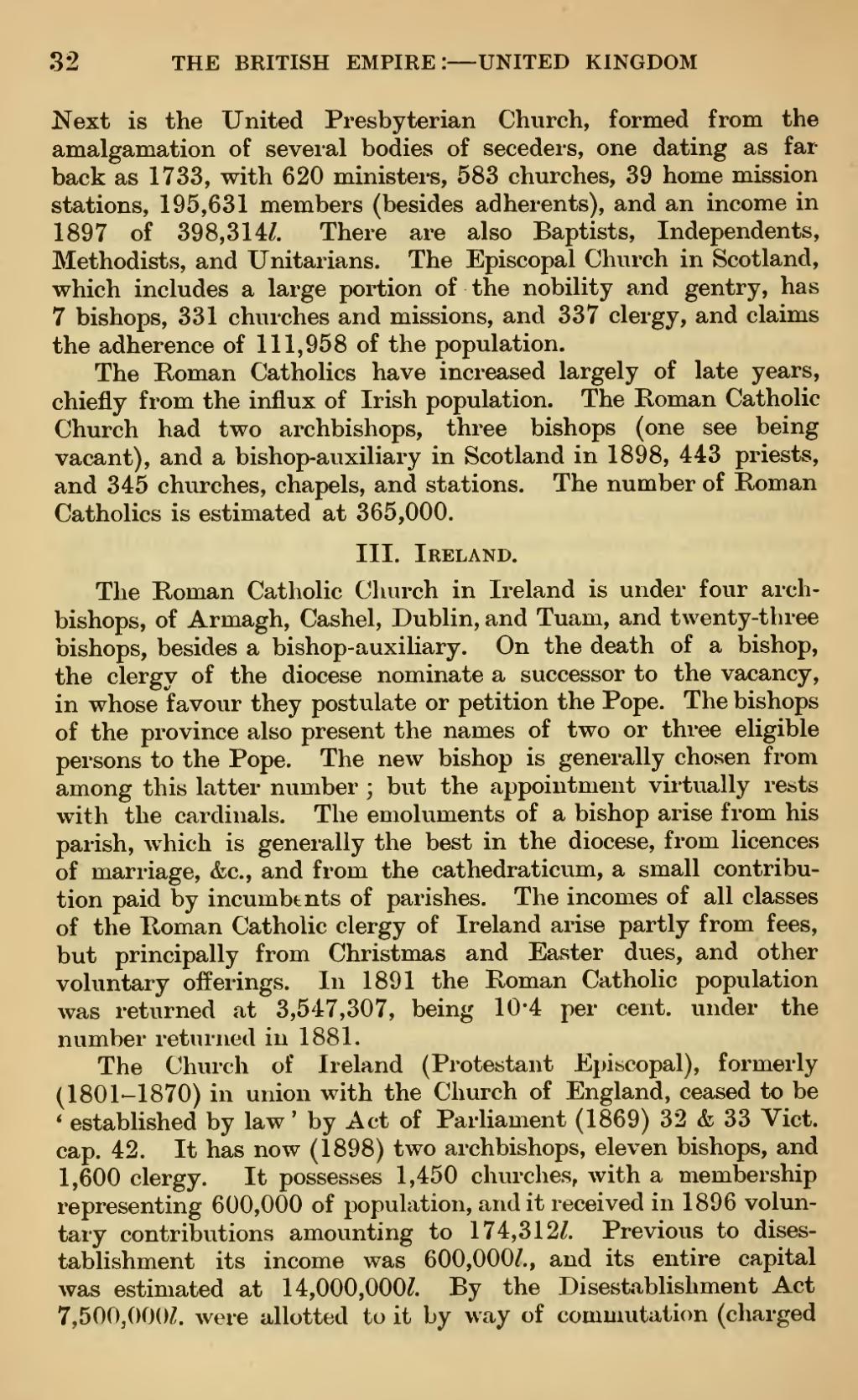32 THE BRITISH EMPIRE: — UNITED KINGDOM Next is the United Presbyterian Church, formed from the amalgamation of several bodies of seceders, one dating as far back as 1733, with 620 ministers, 583 churches, 39 home mission stations, 195,631 members (besides adherents), and an income in 1897 of 398,314/. There are also Baptists, Independents, Methodists, and Unitarians. The Episcopal Church in Scotland, which includes a large portion of the nobility and gentry, has 7 bishops, 331 churches and missions, and 337 clergy, and claims the adherence of 111,958 of the population. The Roman Catholics have increased largely of late years, chiefly from the influx of Irish population. The Roman Catholic Church had two archbishops, three bishops (one see being vacant), and a bishop-auxiliary in Scotland in 1898, 443 priests, and 345 churches, chapels, and stations. The number of Roman Catholics is estimated at 365,000. III. Ireland. The Roman Catholic Church in Ireland is under four arch- bishops, of Armagh, Cashel, Dublin, and Tuam, and twenty-three bishops, besides a bishop-auxiliary. On the death of a bishop, the clergy of the diocese nominate a successor to the vacancy, in whose favour they postulate or petition the Pope. The bishops of the province also present the names of two or three eligible persons to the Pope. The new bishop is generally chosen from among this latter number ; but the appointment virtually rests with the cardinals. The emoluments of a bishop arise from his parish, which is generally the best in the diocese, from licences of marriage, &c., and from the cathedraticum, a small contribu- tion paid by incumbents of parishes. The incomes of all classes of the Roman Catholic clergy of Ireland arise partly from fees, but principally from Christmas and Easter dues, and other voluntary offerings. In 1891 the Roman Catholic population was returned at 3,547,307, being 10*4 per cent, under the number returned in 1881. The Church of Ireland (Protestant Episcopal), formerly (1801-1870) in union with the Church of England, ceased to be ' established by law ' by Act of Parliament (1869)32&33 Vict, cap. 42. It has now (1898) two archbishops, eleven bishops, and 1,600 clergy. It possesses 1,450 churches, with a membership representing 600,000 of population, and it received in 1896 volun- tary contributions amounting to 174,312/. Previous to dises- tablishment its income was 600,000/., and its entire capital was estimated at 14,000,000/. By the Disestablishment Act 7,500,000/. were allotted to it by way of commutation (charged
Page:Statesman's Year-Book 1899 American Edition.djvu/372
Appearance

